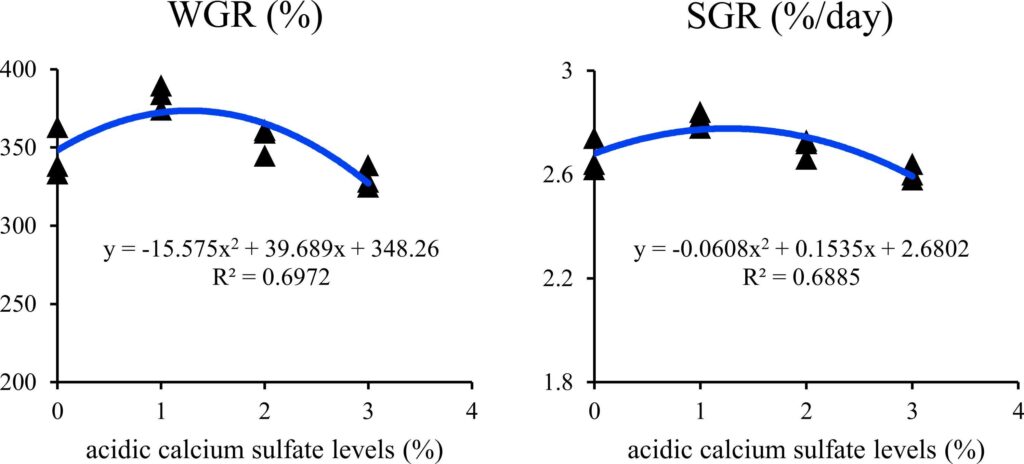
News & Views
Nutrition & Feed products
Research
Acidic calcium sulfate supplement improves growth and health in juvenile largemouth bass
March 22, 2023 By Ruby Gonzalez
 The second-order polynomial regression between dietary acid calcium sulfate levels. Different groups are as follows: the control (0); 1 % acidic calcium sulfate (1); 2 % acidic calcium sulfate (2); 3 % acidic calcium sulfate (3). (Photo: He Huang et al.)
The second-order polynomial regression between dietary acid calcium sulfate levels. Different groups are as follows: the control (0); 1 % acidic calcium sulfate (1); 2 % acidic calcium sulfate (2); 3 % acidic calcium sulfate (3). (Photo: He Huang et al.) Adding one per cent of acidic calcium sulfate (ACS) to the basal diet can effectively improve the growth performance of juvenile Micropterus salmoides and animal resistance against Aeromonas hydrophila, said authors He Huang et al. in a recent study conducted in China.
The team investigated the effects of the chemical on growth, immunity, and disease resistance in the juvenile largemouth bass. The study was published on Aquaculture Reports.
The results provide much needed data on use of the chemical on fishes. While previous studies have proved ACS effectiveness in shrimp, they said that study on fishes is still lacking.
Since China’s ban on antibiotics in feed industry years ago, the push for safe and effective alternatives has never let up.
Experimental diets added zero (control), one (ACS1), two (ACS2) and three (ACS3) per cent ACS, and 0.03 per cent florfenicol to the basal diet for almost two months.
ACS1 group trumped control group on final weight, weight gain rate (WGR) and specific growth rate (SGR). The two other ACS groups also performed better compared to control.
It was noted that more ACS supplementation resulted in declining trend in WGR and SGR.
There was no improvement in the growth performance of fish given diet supplemented with florfenicol compared with the control group.
Like the ACS group, addition of florfenicol to the diet positively impacted the survival rate of the animal challenged by Aeromonas hydrophila.
Survival rate among all groups didn’t vary much. This was also observed in feed conversion ratio, fatness, hepatosomatic index and viscerosomatic index.
ACS was initially used as a food additive before the use expanded as food preservative and, eventually, an alternative to antibiotics in aquafeeds.
It does not affect the taste of food and, much more importantly, it has outstanding anti-microbial properties and safer use. It has strong acid properties without being corrosive and, thus, safer to use.
Print this page





